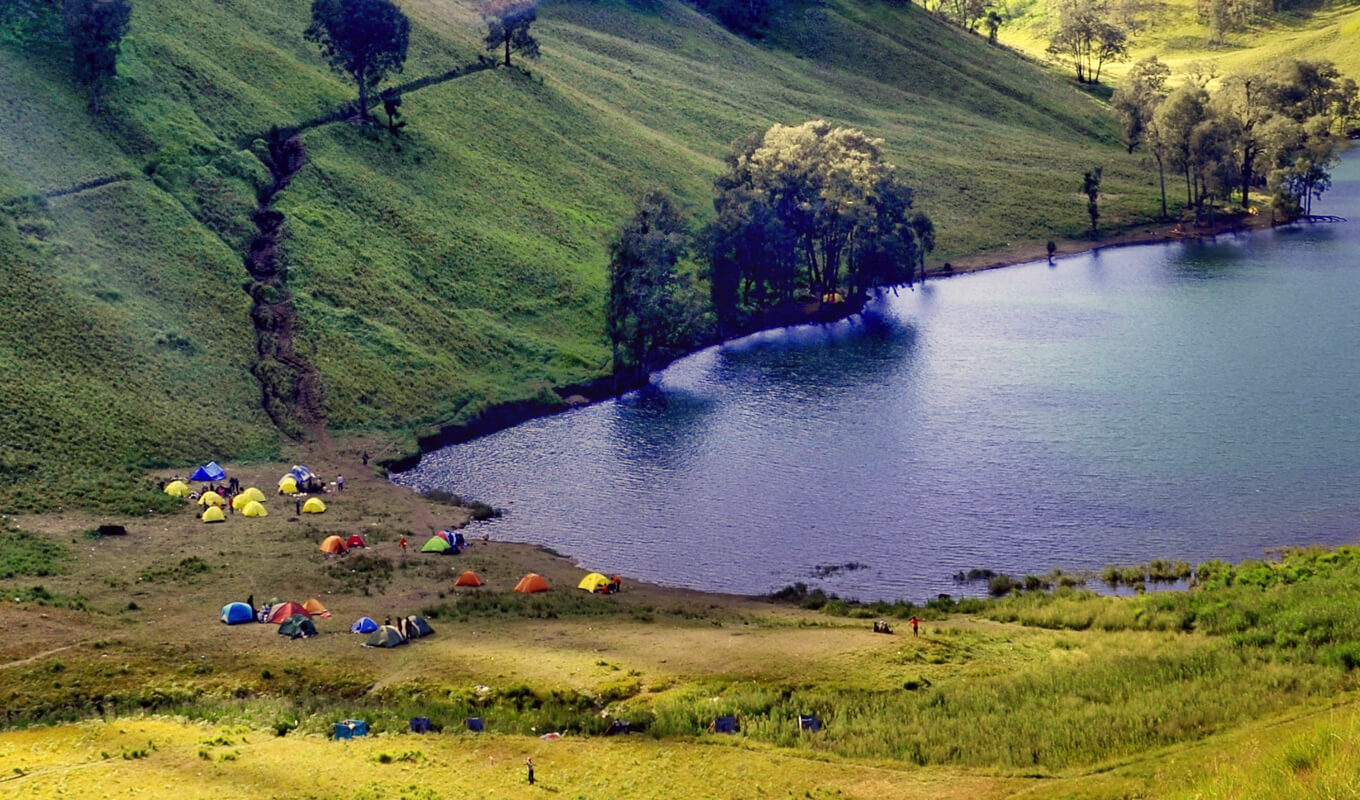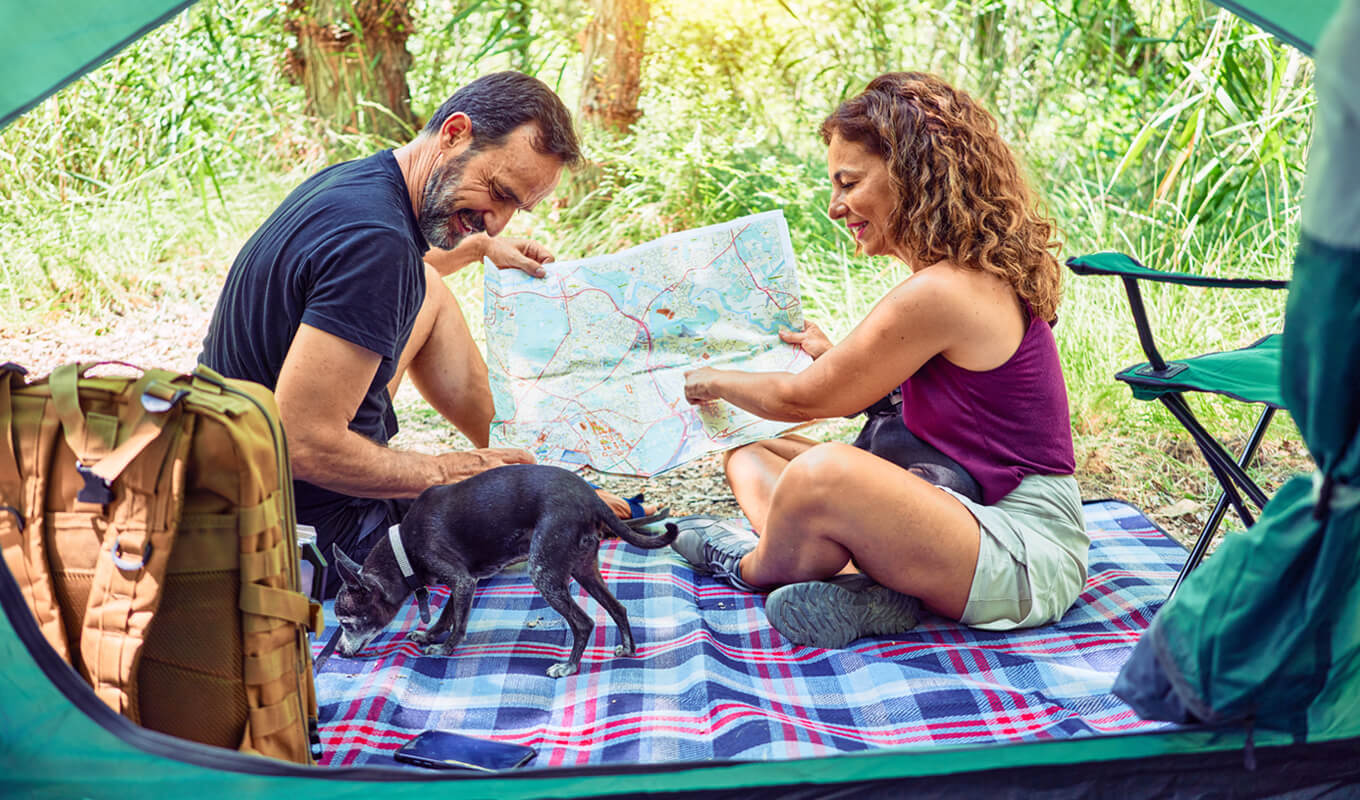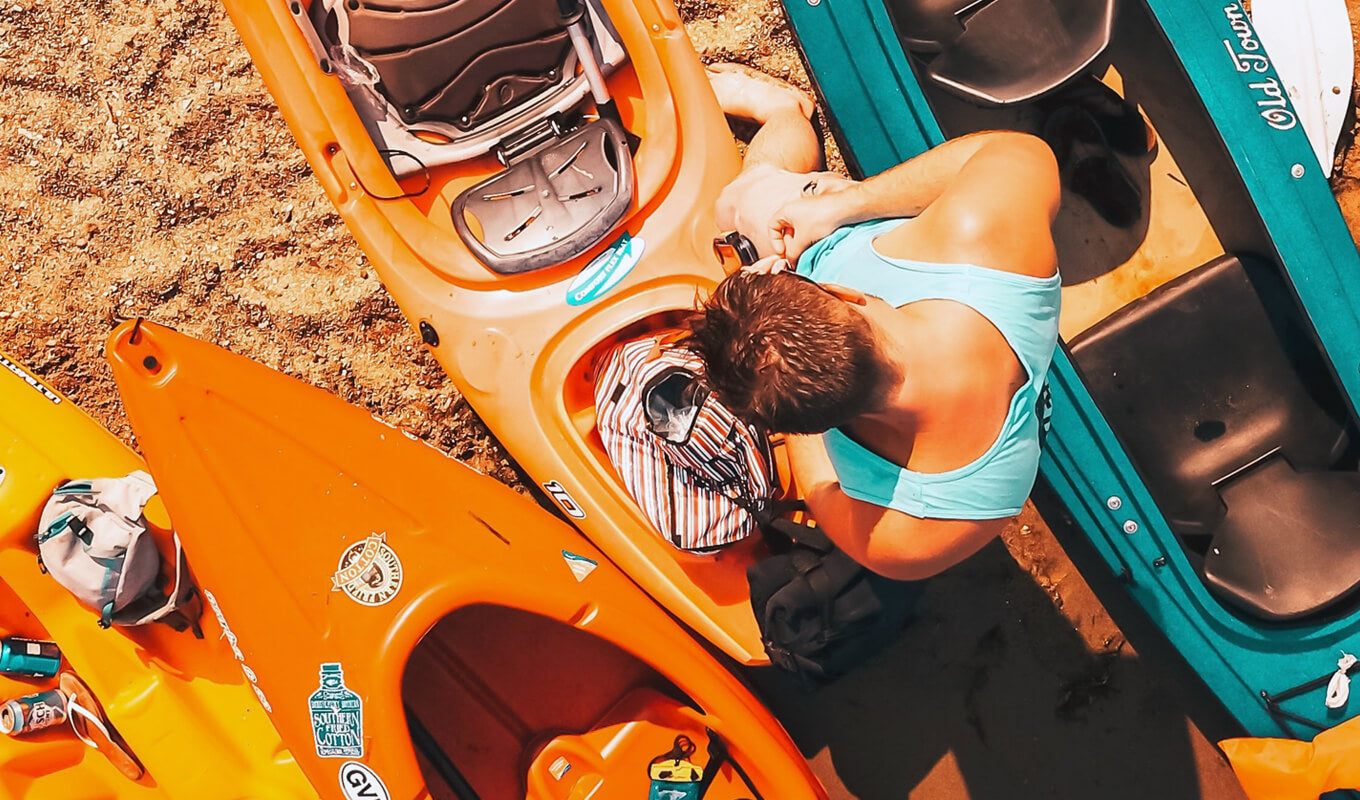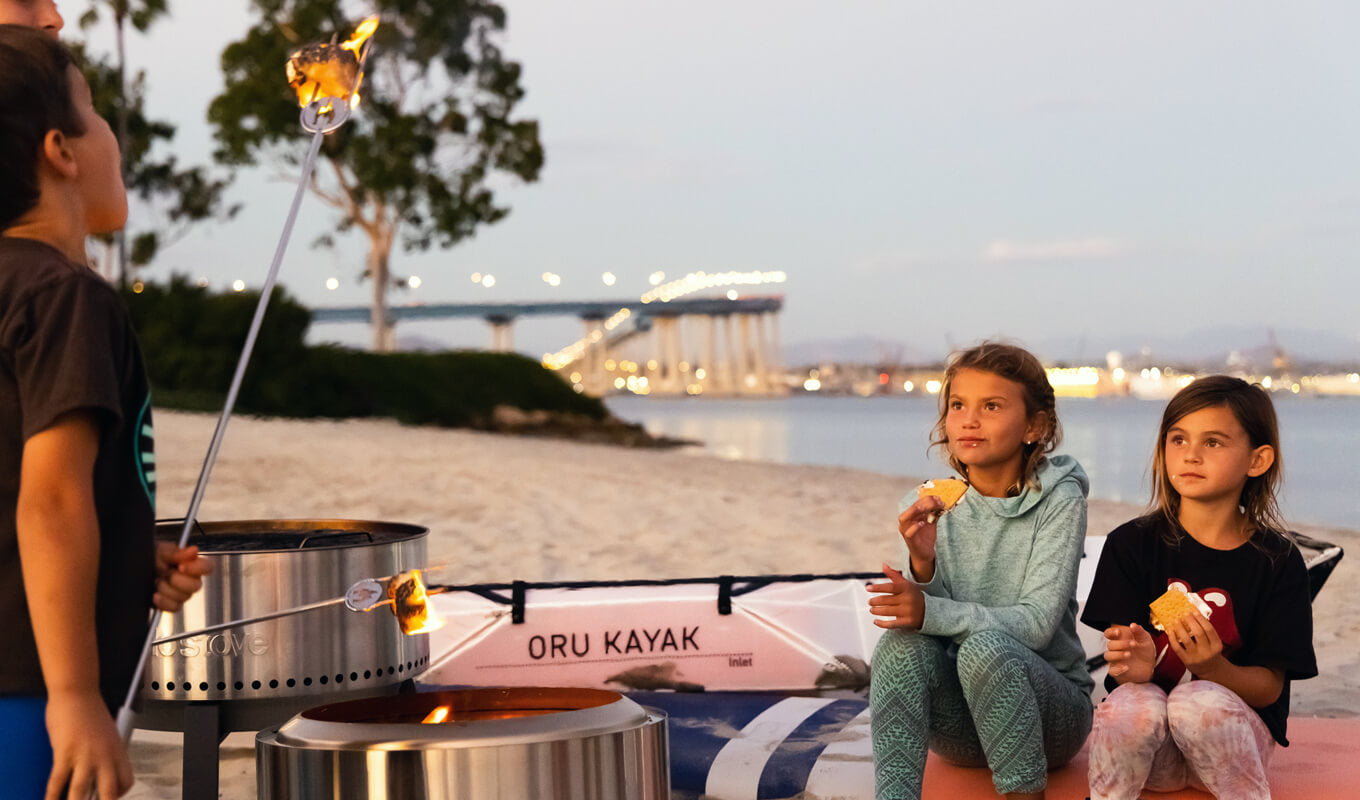Tu carrito está vacío


The fun possibilities of a kayak don’t just end on the water. Kayak camping is becoming more and more popular as kayaks can reach remote places that once would have been impossible to get to with larger motorized boats.
If you’re planning a camping trip on your kayak, we’ve created a list of tips, important information, and a packing list so you can be prepared and equipped with everything you’d need before heading out. Keep on reading for the ultimate guide on how to camp overnight with your kayak.
Topics Covered in This Article

Kayak camping comes with a range of benefits and if you’re still on the fence about whether a kayak camping adventure is a good idea, then these advantages should sway you in the right direction.
One of the major benefits of a kayak camping trip is that you can explore out of reach remote places that aren’t accessible by foot or by a larger boat. If you’re really feeling adventurous, you could even jump in your kayak without a destination in mind and see where the wind (or river) takes you.
As kayaks are more streamlined than your average boat, they’re able to access narrower and shallower waters. These waters that you once couldn’t get through or be prohibited from entering are now easily accessible by the non-motorized kayak.
Being out in nature in itself is a great stress reliever. But, add in some low-impact exercise, and you’ve got yourself an influx of endorphins that are bound to reduce stress and bring you some much-needed peace.
If you’ve mastered your kayaking skills and need a new challenge, then kayak camping is an excellent option. The added weight from additional gear, along with navigating rivers to find the perfect campsite, could be just what you need to break the rut of your average paddle.
The great thing about kayaking and camping is that they’re both family-friendly activities. Heck, you can even take your dog along with you if you really want to.
Kayaking especially is an amazing bonding experience with your children because let’s face it; you’re stuck in a kayak together with no distractions from phones, TVs, or iPads.
Follow that up with a remote camping experience, and before you know it, you’ve racked up 24+ hours of quality one-on-one time that you wouldn’t have gotten from staying at home.
Tandem kayaks are the best option for family camping trips as they not only give you additional space for the youngsters but also provide extra room for additional camping gear.

Now that we’ve covered the benefits of kayak camping, let’s get into some of the things you need to do before heading out on your overnight trip.
The first and most important step is to plan your trip. If this is your very first kayak camping trip, then we highly recommend that you don’t jump into the deep end and instead select a shorter route with relatively calm waters.
It would also be beneficial to only head out for a one or two-day overnight kayak camping trip. Longer kayak camping trips require more gear which could be difficult to transport on your kayak. When it comes to transporting gear on a kayak, practice makes perfect, and the more you paddle with added weight on board, the easier it will be to remain balanced on the water.
Once you’ve decided on a paddling route and a spot to set up camp, then you should always hand this information over to a reliable friend or family member. If something were to happen during your trip and you didn’t return when you said you were going to, then this person has all the relevant information they’d need to inform emergency services.
It may seem extreme, but you never know what will happen.
Weather can make a huge impact on your camping trip. After all, no one wants to be camping and kayaking in the middle of a thunderstorm now, do they?
In our opinion, it’s best to check the weather leading up to your trip and then double-check the morning before you leave. If the weather looks ideal, then you’re good to go! But, if a thunderstorm or severe weather is approaching, then it may be best to postpone the trip until the following weekend.
Along with how the weather will affect your paddling and camping conditions, it will also determine the gear you need to bring. For example, hot sunny weather will call for sunscreen and UV protective clothing, whereas cold, wet, or windy weather will require raincoats, additional layers, and potentially a thicker sleeping bag.
With that being said, however, the weather is unpredictable, so it’s best to pack and prepare for all weather conditions.

All kayaks have a load capacity and what this means is the amount of weight the kayak can carry while still remaining buoyant on the water.
In normal circumstances, when you don’t have additional gear on your kayak, you will remain way under the maximum load capacity. But, once you add all your kayak camping gear on board, you may be close to or even end up topping this maximum weight.
Carrying too much weight on your kayak will cause it to sink further into the water, which in turn makes paddling and turning your kayak extremely difficult. To prevent going over your kayak’s load capacity, follow these steps:
The total weight on board the kayak isn’t the only thing you need to take into consideration. Once you’ve narrowed down all the gear you want to take on your kayaking trip, you need to evenly distribute the weight inside the kayak.
For example, you don’t want to secure all of your gear to the kayak’s back end. Concentrating all the weight on the back end will cause the front of the kayak to lift from the water and vice versa.
You should also try to distribute the weight evenly on the left and right sides of the kayak. Too much weight on the left will cause the left side to sink down, and the same on the right.
We like to do a packing test run before we head out in the water by placing our kayak on some grass or a carpeted area and packing it as if we were setting off on our kayak trip. By doing this, you can see if you’ve distributed the weight well which ultimately saves you time at the water’s edge.

Not many people think to do this, but before they set off, you should always check your kayak for any damage.
Let’s say you have a crack in your kayak that has gone unnoticed, sure, it might be fine for the first few kilometers of your paddling trip, but after a while, that crack could get worse and eventually start taking in water. If your kayak starts taking in water, then we all know what's going to happen.
To prevent any disasters or soggy kayakers/gear, you should always check your kayak and ensure it’s in good working order.
We’re going to get into the overnight kayak camping checklist a little bit later, but we thought it was important to mention that you should double-check your list and your gear before heading off.
I think it is safe to say that we have all packed for a trip and realized we had forgotten something when we reached our destination. It happens. But when you’re on a camping trip in the middle of nowhere, forgetting something important could be a huge problem.
This is why we suggest writing a list of everything you need or want for your trip. When you come to pack your bag, you can tick off each item to ensure it's packed and ready to go.
At the bottom of the list, it’s also beneficial to write down the items that need to be packed last minute. You could even set a reminder on your phone for an hour before you’re meant to leave so that these items really do get packed.
When selecting gear for your trip, think lightweight, compact, and weather appropriate. Ideally, you’d want to fit all your clothes in a backpack as if you were heading out on a backpacking trip.
Minimalism on overnight kayak camping adventures is key as remember; you need to fit all of your gear and equipment into a tiny boat with you. If you’re an over-packer, then you really need to take the extra time of thinking, “do I really need this item?” If the answer is no, leave it off your packing list and focus on the important gear.
We know minimal packing is hard, but trust us, you’ll be grateful that your legs aren’t squished in the cockpit during your multiple hour paddles.

Now that you’ve got minimalism in mind, here is our ultimate gear checklist for your next kayak camping trip.


Yes! Camping with a kayak is gaining popularity as kayaks can reach remote places that are inaccessible by larger boats or on foot.
Kayak camping is relatively easy as all it takes is for you to pack your normal camping gear into your kayak and paddle out to your chosen kayak camp.
A sit-on-top kayak is the best type of kayak to take camping as they offer more storage areas than sit-in kayaks.
If you’re purchasing a kayak for the sole purpose of kayak camping, then we suggest finding a kayak option that is long and has a wide deck space. This additional length and width will make all the difference when packing and distributing your camping gear.
Some of our top kayak camping tips include:
The only thing stopping you from taking everything and the kitchen sink is your kayak’s maximum load capacity. Each and every kayak has a certain weight that it can hold, and you need to remain under this limit to keep your kayak working at its best.
Having too much gear on a kayak will cause it to sink it too far into the water, which makes it difficult to paddle and maneuver. We suggest taking note of your kayak’s load capacity, weighing yourself, any passengers, and any gear you’ll be taking on board, and comparing the two numbers together.
If you’ve gone over the limit, then it is time to be ruthless and remove some things from your gear list.
Los comentarios se aprobarán antes de mostrarse.